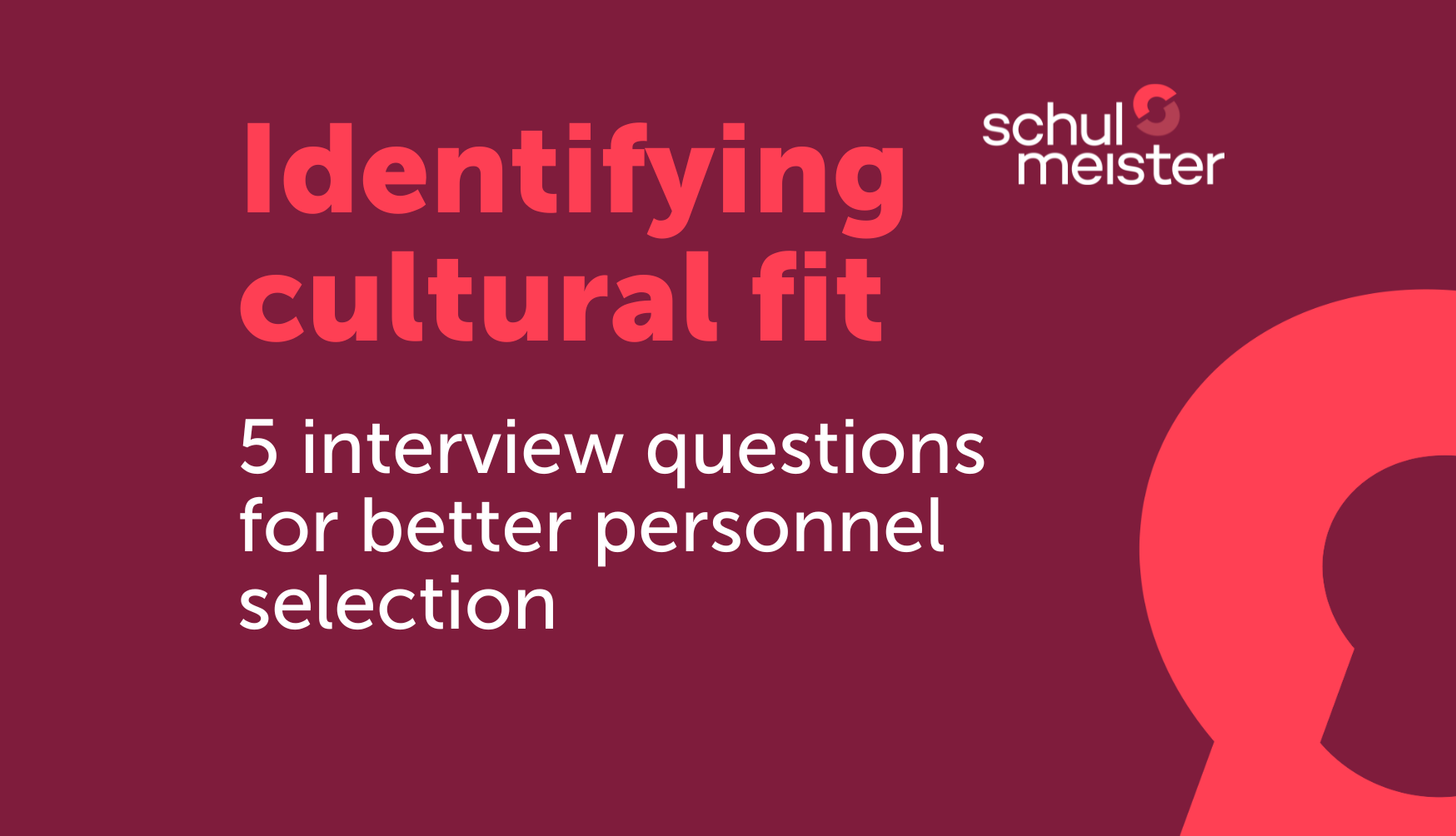What is Cultural Fit?
The concept itself is not new – yet it is more relevant than ever. According to the psychological framework of Person–Organisation Fit (Kristof, 1996), individuals are more engaged, motivated and productive when their personal values, attitudes, and working styles align with those of the organisation.
Cultural fit refers to this alignment between a person and the company’s culture – and is far more than a gut feeling or a matter of likeability. It significantly influences how quickly a new hire integrates into a team, how strongly they identify with the company, and how likely they are to stay in the long term.
Cultural Fit ≠ Cultural Uniformity
A common criticism of the concept is that it can unintentionally lead to a homogenous team culture – the notion of “we’re looking for someone just like us.” This risks suppressing diversity in thought, experience and background.
However, cultural fit and diversity are not mutually exclusive – quite the opposite. As highlighted in the Harvard Business Review, what matters is how we define “fit”. When organisations move away from superficial traits (such as hobbies or demeanour) and focus on shared values and complementary strengths, cultural fit can actually strengthen diversity.
👉Read the article: Hiring for Culture Fit Doesn’t Have to Undermine Diversity
The key question is therefore not: “Does this person fit in?” but rather:“Does this person enrich our team based on shared values – even if they think differently?”
Why Cultural Fit Matters
A strong cultural fit means that a person’s motivations and attitudes align with the company’s lived values. This affects job satisfaction, motivation, and performance – as explained in the Person–Organisation Fit model.
Studies show that employees with a high cultural fit:
- integrate into teams more quickly,
- identify more strongly with the company vision,
- are more resilient and productive,
- are less likely to leave the company.
According to a study by HR Magazine, 67% of employers consider cultural fit to be “very important” in the hiring process. 76% said it improves employee retention, and 70% stated it increases job satisfaction.
Conversely, a mismatch in values can lead to conflict – issues that cannot be resolved through onboarding or training. Cultural fit is therefore not a “nice to have”, but a strategic pillar of high-quality recruitment.
5 Interview Questions to Assess Cultural Fit
These five interview questions help you assess cultural fit on a deeper level – grounded in reflection and aligned with the principles of the Person–Organisation Fit model.
1. In what kind of company culture have you felt most comfortable – and why?
🎯Goal: Gain insight into candidates’ values, preferred structures and cultural expectations
👁 Fit perspective: This answer reveals the individual’s personal definition of cultural alignment – and what environment enables them to thrive.
2. Explain the characteristics of the best supervisor(s) you have ever had.
🎯Goal: Understand expectations of leadership and communication
👁 Fit perspective: This reveals leadership values and how they match your company's style and structure.
3. How would your colleagues describe you in three words?
🎯Goal: Understand self-image, team role and interpersonal behaviour
👁 Fit perspective: A useful glimpse into social norms and whether the candidate integrates naturally or purposefully contrasts the team dynamic.
4. What motivates you to get up in the morning – beyond salary and job title?
🎯Goal: Identify intrinsic drivers and personal values
👁 Fit perspective: A strong alignment between what drives someone and what your company supports is at the core of the cultural fit model.
5. In what kind of work environment can you reach your full potential?
🎯Goal: Assess suitability for your actual workplace setup
👁 Fit perspective: This uncovers whether the candidate’s way of working matches your organisational context – a key factor for long-term success.
You can find an interesting article on the topic of cultural fit in recruiting here: Recruiting for Cultural Fit.
Identifying Cultural Fit: Know-how meets method
A well-led interview reveals valuable signals of cultural fit – but making confident, long-term hiring decisions often requires more than intuition. That’s where we at Schulmeister bring in our combined expertise and tools: We align personal consulting with data-driven analysis – using the OneView behavioural profile developed by the SCHEELEN® Institute.
Why OneView is a gamechanger:
- it maps individual behaviour patterns and value systems,
- it compares them with role-specific and cultural requirements,
- it makes soft skills visible – a key to long-term fit.
“OneView allows us to compare candidates and company needs not just emotionally, but with solid data. Especially in leadership recruitment, it’s a gamechanger.” Christian Obenaus, Senior Consultant at Schulmeister
Schulmeister’s USP: More than a tool – a holistic recruitment approach
At Schulmeister, OneView isn’t just a plug-in – it’s an integral part of our recruitment process. Together with our clients, we analyse:
- your company’s lived culture,
- the personality and behavioural requirements of the role
- and conduct targeted interviews and OneView assessments accordingly.
Conclusion
“For us, cultural fit is not a gut feeling, but a strategic decision. That's why we provide our clients with holistic support - from analysis and selection to integration.”
– Robert Szvetecz, Manager at Schulmeister
Click here for our Cultural Fit Guide








